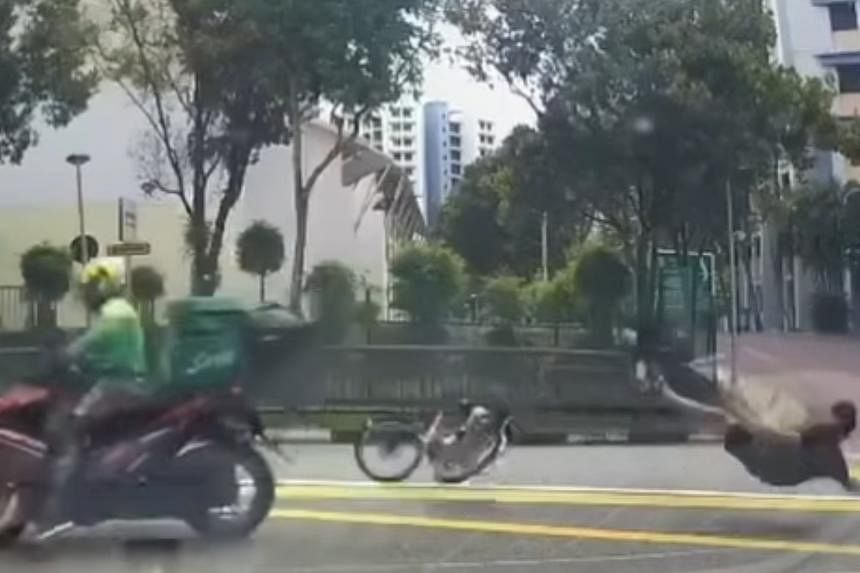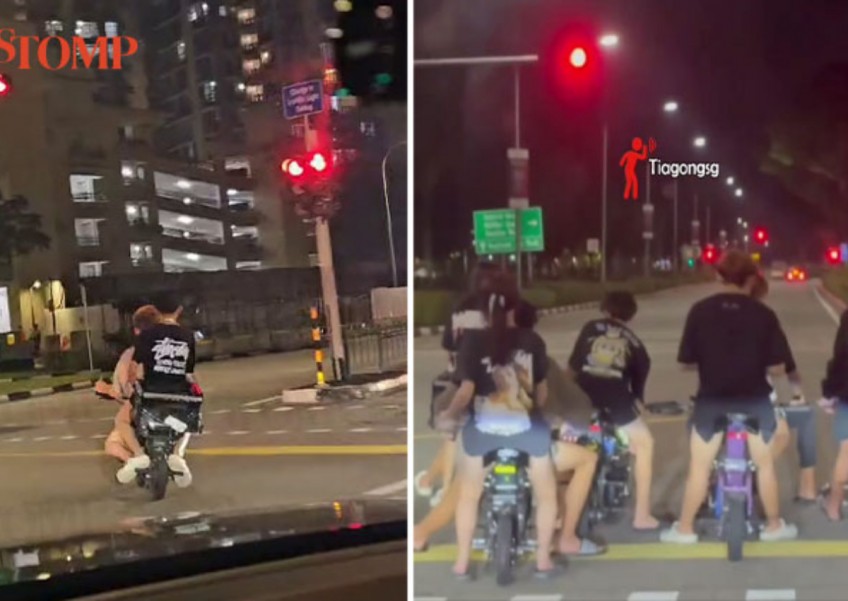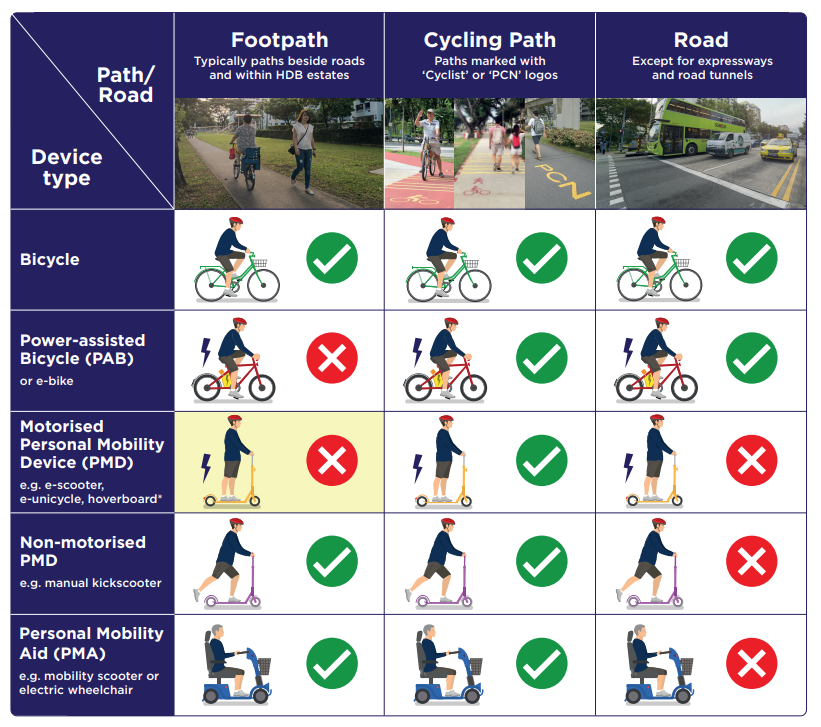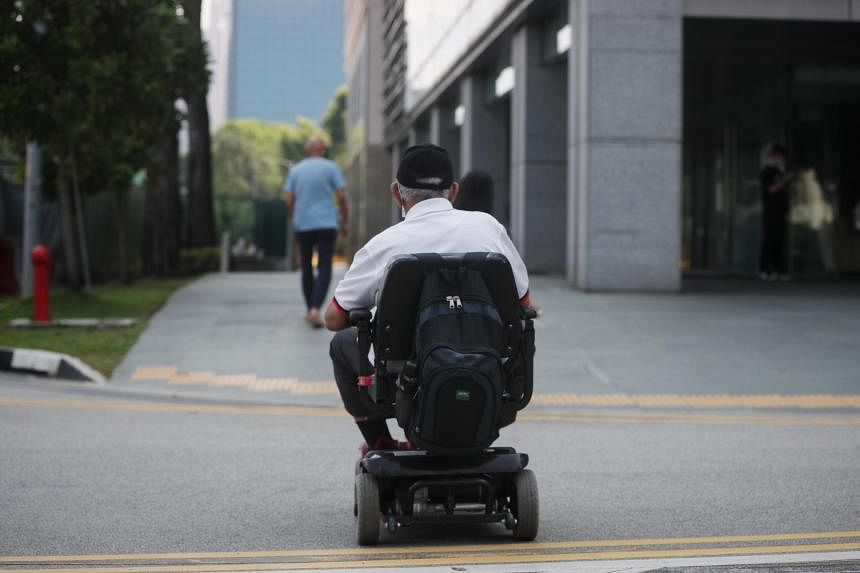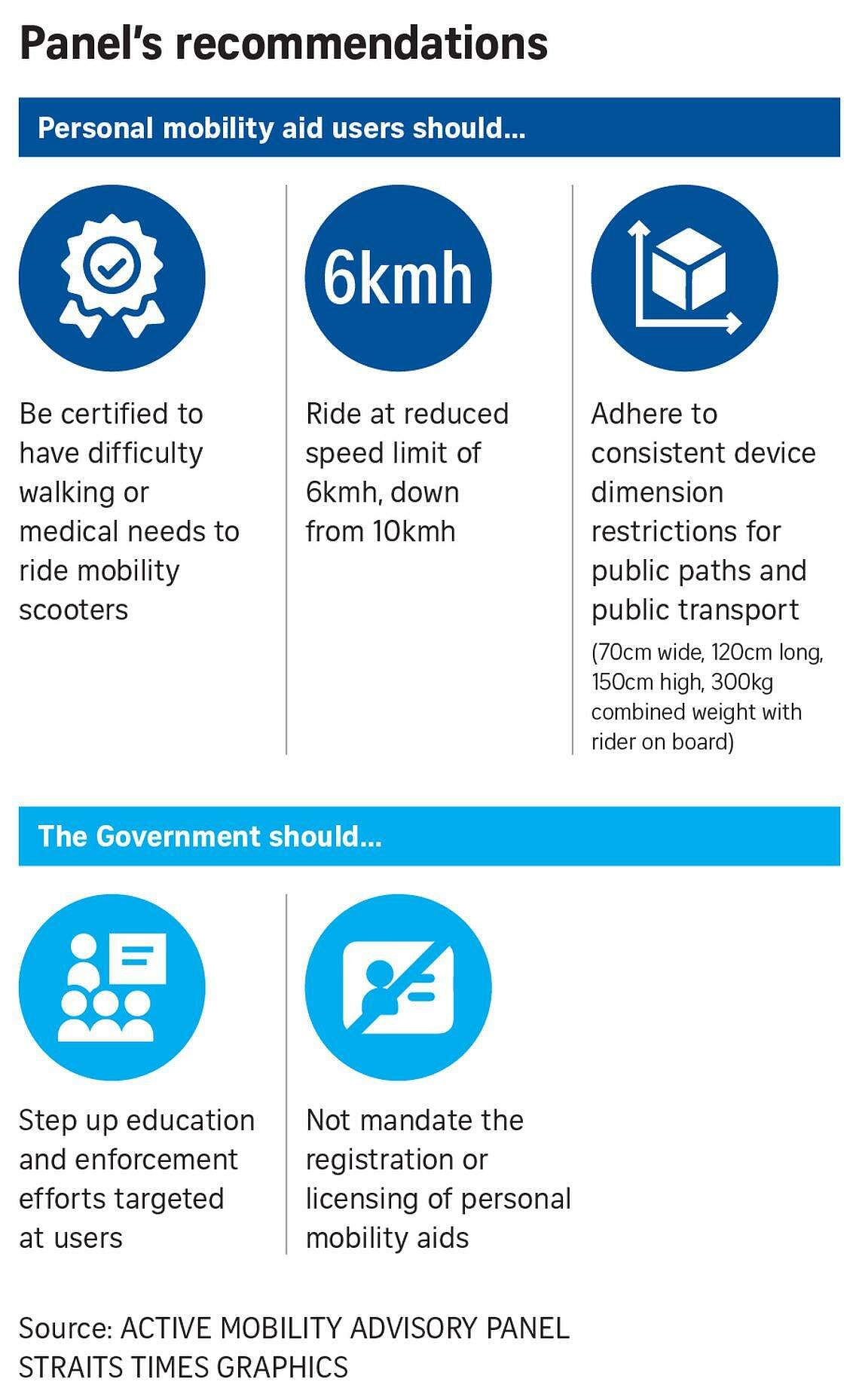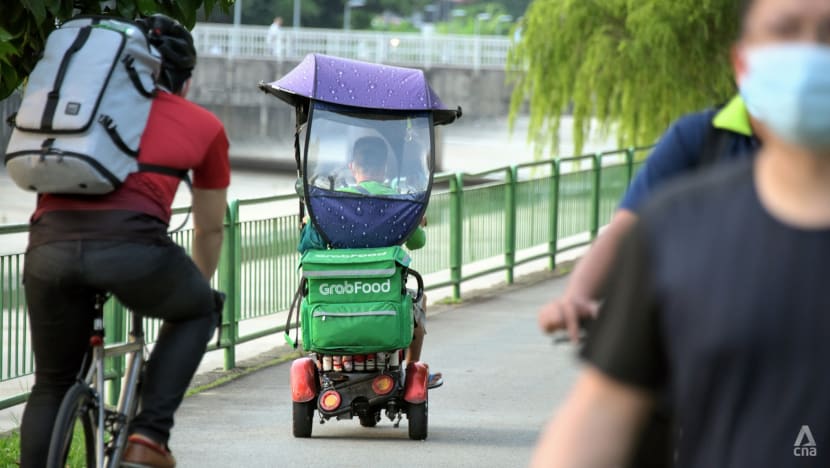Panel proposes limiting mobility scooters to those certified to have difficulty walking
The panel said implementation details would be finalised after further discussion with the relevant agencies if the recommendations are accepted. ST PHOTO: KELVIN CHNG
Esther Loi
Dec 14, 2023
SINGAPORE – Only people who are certified to have walking difficulties or medical needs should be allowed to use mobility scooters, a review panel has proposed.
In its proposal submitted to the Ministry of Transport on Dec 14, the Active Mobility Advisory Panel (Amap) said that in recent years, there have been rising concerns that able-bodied people have been misusing personal mobility aids (PMAs), particularly mobility scooters. These include concerns over dangerous riding, speeding and overly large PMAs.
To prevent the misuse of these devices, the 16-member advisory panel also recommended that the Government reduce the speed limit of all motorised PMAs – including motorised wheelchairs – from 10kmh to 6kmh, the typical walking speed.
This is to better reflect their intended use, which is to replace walking for users with mobility challenges, said Amap. Mobility aids can be used on footpaths and cycling tracks but not on roads.
Amap could not provide an estimated number of active mobility aid users or devices in Singapore. These devices do not have to be registered upon purchase.
The panel said it expects the number of such users to increase as Singapore’s population ages.
If the proposal is adopted, current PMA users can use relevant certification or disability identification, such as concession cards for commuters with disabilities, to show they qualify. Those who do not have one should obtain certification of a medical need or a doctor’s memo before using a PMA.
Amap said it has proposed a targeted approach for certification that covers only mobility scooters. This is to minimise the impact on users with genuine needs who are using manual and motorised wheelchairs.
The panel decided against proposing a blanket exemption for seniors above a certain age from providing medical certification to use a mobility aid. That is because this could encourage able-bodied people to walk less and use a mobility aid instead, which will be undesirable for Singapore’s ageing population, it said.
The use of such devices should still be based on a user’s needs, regardless of age, said Amap.
The panel said implementation details would be finalised after further discussion with the relevant agencies if the Government accepts its recommendations.
With regard to the proposed reduction of the speed limit for all motorised mobility aids, Amap conducted a study of overseas jurisdictions and found that several have imposed similar speed limits on paths.
For example, Britain sets a 6.4kmh limit on paths, while Benidorm in Spain has a 4kmh restriction.
Given that many users of existing devices can travel at speeds of up to 10kmh in Singapore, the panel also recommended that the Government put in place transitional measures that allow current users to continue using their existing devices at the proposed limit of 6kmh.
Amap said that as a gauge of how fast they are riding, users can adopt the walking speed of other path users, which will be between 4kmh and 6kmh.
In response to concerns about riding upslope, Amap notes that it is a device’s torque (or rotational force that drives a device forward), rather than speed, that determines its ability to climb slopes. As such, users could check with retailers to ensure that they buy a mobility aid that meets their needs.
Going forward, retailers should also be required to sell mobility aids with a maximum speed of 6kmh, the panel proposed. It said a reasonable transition time should be factored in to enable retailers to clear existing stock and obtain devices that adhere to the proposed speed limit.
With the new limit in place, Amap suggested that mobility aids travelling faster than 6kmh be reclassified as motorised personal mobility devices, which are allowed only on cycling paths.
In addition, the panel recommended applying the same dimension restrictions for mobility aids on public transport to their use on public paths. These dimensions are a width of 70cm, length of 120cm, height of 150cm, and combined weight of 300kg with the rider on board.
This is to allow users of such devices to transit between public paths and public transport more smoothly, said Amap.
For a small proportion of users who may need to use mobility aids that exceed the allowable dimensions for medical reasons, the panel suggested that the Government exempt them from adhering to these restrictions if they have relevant certification.
Amap also recommended that the Government increase public education efforts on the use of mobility aids, including providing safe riding and fire safety tips.
Better enforcement, with appropriate penalties, should also be reinforced, said the panel.
Lastly, Amap proposed that registration of mobility aids should not be introduced as this may deter those with a genuine need from using the devices.
Speaking at a media briefing on Dec 14, Amap chairman and Senior Parliamentary Secretary for Transport Baey Yam Keng said the proposals are intended to promote active mobility among those with walking difficulties and other people, while also maintaining public safety.
He noted that the recommendations will not have an adverse impact on genuine users, since they can continue using their devices with their existing certification from doctors, occupational therapists and disability agency SG Enable.
Asked about the potential implementation schedule for these recommendations, Mr Baey said: “The ministry will need some time to review these recommendations.
“From past experience, when Amap submits its recommendations, the Government takes a few months to look at them and think through how to implement these recommendations, because some of them require legislative amendments.”
In a Facebook post on Dec 14, Acting Transport Minister Chee Hong Tat said his ministry will go through the panel’s recommendations before responding with its decision.
Users of PMAs have made the news in recent years, including those who crashed their devices into glass doors at
Toa Payoh Bus Interchange and
Singapore General Hospital.
There have also been sightings of purportedly able-bodied users riding mobility scooters in public spaces.
Here are the five recommendations from Amap:
- Allow only users with certified mobility issues to use mobility scooters
- Reduce the speed limit of motorised mobility aids from 10kmh to 6kmh
- Standardise mobility-aid dimension restrictions for public paths and public transport
- Step up education and enforcement efforts
- Do not mandate registration or licensing of mobility aids



